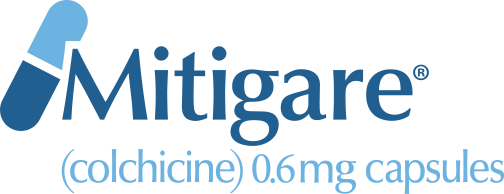
The American College of Rheumatology (ACR) is a non-profit, global organization committed to improving the care of people with rheumatic diseases, including gout.1 To establish the most effective disease management strategies and ensure the best outcomes for patients, the ACR provides detailed clinical guidelines to physicians.2 These guidelines are updated from time to time based on the newest research, technology and medical knowledge.2 Keep reading to learn more about the latest Gout Management Guideline updates and what they mean to people with the disease.
Why are the gout management guidelines being updated?
The ACR Gout Management Guidelines were created to emphasize safety and quality of therapy and to promote effective management of the condition.3 These Guidelines are updated regularly to reflect the most up-to-date research, discoveries, medications and disease management methods.3 Based on data from the 2012 gout treatment guidelines and a number of clinical studies, the ACR is making some important changes to the Guidelines.4 The highlights of these changes were presented at the ACR annual meeting last November in Atlanta, Georgia. The complete set of updated Guidelines will be officially unveiled later this year.4
What is the most important update?
One of the most talked-about updates to the Guidelines is the recommendation of a treat-to-target strategy for people with gout who are beginning ULT.4 Based on data from newer clinical trials, the draft Guidelines recommend starting patients with a low dose of a ULT medication and increasing the dose until the patient achieves and maintains a uric acid level of 6 mg/dL or less.4 The goal of this strategy is to optimize patient outcomes and reduce the risk of gout treatment-related side effects.4 Gradually increasing the dose in this way may also help to reduce the risk of gout attacks that often accompany the start of ULT.4
What are some of the other key updates?
Some of the other noteworthy proposed Guideline changes include:
Allopurinol First—A strong recommendation that people with gout should be prescribed allopurinol as their first ULT, even those with moderate to severe chronic kidney disease (CKD).4
Preventive Therapy for Gout Attacks—A strong recommendation to start and stay on an anti-inflammatory medication (such as colchicine, a NSAID or prednisone/prednisolone) for at least three to six months from the beginning of ULT rather than less than three months.4 Furthermore, people with gout who continue to have attacks should remain on this treatment for even longer.4
Early ULT—A recommendation to start ULT after the first gout attack or in those with infrequent gout attacks.4 ULT is also recommended for people with gout who have moderate to severe CKD, a uric acid level higher than 9 mg/dL or kidney stones.4
Genetic Testing—A recommendation to test people of Southeast Asian descent (eg, Han Chinese, Korean, Thai) and African-American descent for their risk of certain rare yet potentially severe side effects of allopurinol and other ULTs before starting this treatment.4,5
Talk with your doctor
If you suspect you have gout, make an appointment to visit your doctor right away. You may want to download and complete the Gout Flare Questionnaire (from Resources for Patients) beforehand to discuss during your visit. It is important to get the disease under control as soon as possible, and ULT and/or other medication(s) may help.3
NOTE: This article was not written by a medical professional and is not intended to substitute for the guidance of a physician. These are not Hikma’s recommendations for gout flare prevention, but rather facts and data collected from various reliable medical sources. For a full list of resources and their attributing links, see below.
